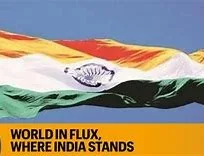🇮🇳 India in Flux: Unraveling the Political Shifts and Their Impact on the Common Citizen
India, often called the world's largest democracy, is no stranger to political transformation.
However, the current political shifts in 2025 feel different — deeper, more personal, and more connected to everyday life than ever before.
From policy overhauls to new political alliances, from regional assertion to national narratives, change is sweeping across India at a pace that even seasoned observers find dizzying.
But the crucial question remains: What do these shifts mean for the common citizen?
Let's unpack the transformations, the trends behind them, and their real-world impact on India's people.
A New Political Landscape: Evolving Power Centers
Over the last few years, India’s political map has seen seismic changes:
-
Rise of Regional Parties: Regional leaders have grown stronger, influencing not just state but also national politics.
-
BJP’s Adaptation: The ruling Bharatiya Janata Party (BJP), under Prime Minister Narendra Modi, continues to dominate nationally, but it now faces stiff, strategic resistance in certain states.
-
Emerging Coalitions: Opposition parties, learning from past defeats, are forming more cohesive coalitions to challenge the BJP’s grip.
-
Youth and First-Time Voters: New voters — tech-savvy and issue-driven — are reshaping election dynamics.
Related: Why Regional Politics Matter More Than Ever in India ➝
Key Drivers Behind the Political Flux
1. Economic Realities
The COVID-19 pandemic, global recession concerns, and job market disruptions have exposed vulnerabilities in India's growth story.
Inflation, rural distress, and urban unemployment have made economic issues central to political discourse.
Government schemes like PM Awas Yojana and PLI (Production-Linked Incentive) schemes offer some relief, but anxiety about the future is palpable.
Learn more: How India's Economic Policies Are Shaping Voter Sentiment ➝
2. Social and Cultural Narratives
Identity politics, religion, caste dynamics, and nationalism continue to dominate political messaging.
Movements around issues like:
-
Uniform Civil Code
-
Reservation policies
-
Minority rights
are sparking intense debates, impacting alliances and voting patterns.
Explore: India's Social Changes and Their Political Fallout ➝
3. Technological Disruption
With Digital India 3.0 in full swing, campaigns are now fought as fiercely online as they are on the ground.
Social media influencers, AI-driven outreach, and WhatsApp groups are reshaping how narratives are built and battles are fought.
Read: How Digital India 3.0 Is Changing Indian Elections ➝
How These Shifts Impact the Common Citizen
While political gamesmanship often hogs the headlines, the real effects are visible in day-to-day life for ordinary Indians.
1. Changing Welfare Landscape
Government programs are now more targeted thanks to better data management.
But questions about inclusivity, last-mile delivery, and genuine empowerment remain.
Example:
Direct Benefit Transfers (DBTs) have reduced leakage but created new challenges around digital literacy and banking access in rural areas.
2. Polarized Public Discourse
Citizens find themselves caught in a more polarized environment — whether over religion, political affiliation, or even entertainment choices.
This has led to greater mistrust within communities and strained friendships and family ties.
3. Employment & Education Reforms
New education policies like the National Education Policy (NEP) 2020 aim to create future-ready citizens.
Meanwhile, skilling initiatives and gig economy growth offer opportunities — but also uncertainty about job security.
Discover: How India's NEP 2020 Aims to Transform Education ➝
4. Health and Infrastructure Development
Post-pandemic, healthcare infrastructure has seen massive investment, especially in Tier-2 and Tier-3 cities.
Programs like Ayushman Bharat have brought basic healthcare closer to underserved populations.
However, challenges of affordability and quality persist, especially in rural hinterlands.
Explore: India's Healthcare Push After COVID-19 ➝
The Rise of Issue-Based Politics
One promising trend amid the flux is the rise of issue-based voting.
Many citizens, especially younger voters, are prioritizing:
-
Job creation
-
Environmental sustainability
-
Women’s safety
-
Infrastructure quality
over traditional loyalties based on caste, religion, or region.
This shift could lead to healthier democratic debates and more accountable leadership in the years ahead.
Related: Why Young Voters Are Reshaping Indian Democracy ➝
Risks of Political Flux: What We Must Watch Out For
While change can be energizing, it can also bring risks:
-
Policy Uncertainty: Constant political upheaval can discourage long-term investments and disrupt development plans.
-
Erosion of Democratic Norms: Increased polarization and strongman politics threaten checks and balances.
-
Marginalization of Minor Voices: As majoritarian narratives grow louder, smaller communities could be pushed further into the margins.
Hope Amidst Uncertainty
Despite the turbulence, there are many reasons for hope.
-
Civic engagement is at an all-time high.
-
Citizen journalism, social media activism, and NGOs are ensuring that critical issues stay in public discourse.
-
India's democratic spirit, tested time and again, continues to adapt and endure.
As India in 2025 navigates this flux, the resilience, wisdom, and spirit of its people will ultimately determine the nation's course.
Conclusion: Democracy’s True Test
Political shifts are inevitable in any vibrant democracy.
For India, the real test lies not just in which party wins an election, but in whether governance remains people-centered, rights-respecting, and future-focused.
The average Indian doesn’t crave political drama; they seek dignity, opportunity, justice, and security.
If political forces — across the spectrum — understand and serve these aspirations, India will not just survive this period of flux, but emerge stronger from it.

Comments
Post a Comment